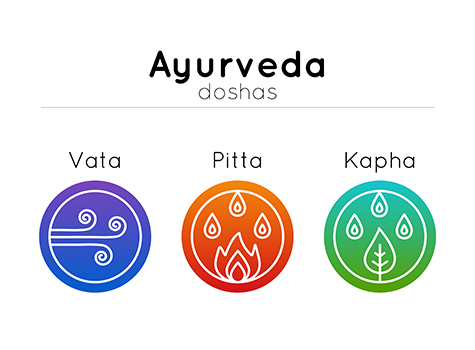
The month of March brings the hope of spring with colorful flowers in bloom. Holi, the festival of colors, is celebrated by all people irrespective of their gender, caste, religion or economic status. Everyone comes together with people showering each other with a rainbow of colors to celebrate life with a message of love and victory of good over evil.
Colors have a deep connection with the emotions and moods of all human beings. This is why painting is considered therapeutic. There is an explosion of coloring books for adults. Artists and interior designers have long believed that color can dramatically affect moods, feelings, and emotions. Several ancient cultures, including the Egyptians and Chinese, practiced chromotherapy, or the use of colors to heal. Art and color therapy are increasingly being integrated for treatments in several areas including seizures, schizophrenia, bipolar disorders and trauma.
So we do know that external cues from various colors can affect our body and mind. But did you know that the natural colors from food can have various internal benefits as well? Have you heard the phrase, “Eat a Rainbow”? Think about red, green, yellow, orange, blue, purple, and even white! A lot of color on your plate not only makes your food look good, but also helps keep your body healthy.
Fruits and vegetables contain many compounds that have anti-oxidant, anti-inflammatory, and anti-bacterial properties. The natural colors present in fruits and vegetables supply us with powerful nutrients and phytochemicals that help build immunity and reduce risk of many chronic diseases. Eating a variety of colorful foods can be an easy way to help your body heal and thrive.
Benefits of Color
Red: Lycopene, Anthocyanins, Ellagic Acid, Resveratrol
Red fruits and vegetables contain many phytochemicals, including lycopene, anthocyanins and ellagic acid, and have been proven to help fight cancer, reduce the risk of diabetes and heart disease, improve skin quality, and have many other benefits. Tomatoes have been linked to lowering the risk and reverse the progression of prostate cancer. Strawberries have been found to prevent and reverse esophageal cancer. Red cabbage is one of the best superfood bargains and has the highest level of antioxidants per dollar. A glass of red wine has been touted as being beneficial for heart health. However, the key ingredient in wine is red grapes which have a compound called resveratrol. Grapes don’t have to be fermented to contain this antioxidant. It’s actually found in the skin of red grapes. So forget the wine and just eat the grapes!
Benefits: Heart health, memory function, urinary tract health, lower risk of cancer
Sources: Red apples, Beets, Red cabbage, Cherries, Cranberries, Red grapes, Red peppers, Red onions. Pomegranates, Raspberries, Rhubarb, Strawberries, Tomatoes, Watermelon
Yellow/Orange: Carotenoids
Orange and yellow fruits and vegetables are rich in vitamin C and carotenoids. Some carotenoids, most notably beta-carotene, convert to vitamin A within the body, which helps promote healthy vision and cell growth. Citrus fruits contain a unique phytonutrient called hesperidin, which helps to increase blood flow. Consuming citrus may also reduce risk of stroke.
Benefits: Vision health, lower blood pressure, lower risk of cancer
Sources: Apricots, Butternut squash, Cantaloupe, Carrots, Corn, Golden Beets, Lemons, Mangoes, Nectarines, Oranges, Papayas, Peaches, Pineapple, Pumpkin, Orange and Yellow peppers, Sweet potatoes, Yellow summer or winter squash (butternut, acorn, etc.).
Green: Chlorophyll, Lutein, Isoflavones
Greens are known as a superfood as they are a powerhouse of nutrients. Green fruits and vegetables are rich in lutein, isothiocyanates, isoflavones, and vitamin K, all essential for blood and bone health. Green vegetables are rich in calcium and an excellent source of folate – a nutrient especially important for pregnant women to help prevent congenital disabilities. Cruciferous vegetables, like broccoli, have been shown to enhance immune function. Dark leafy greens like kale may improve mood. Kiwi fruit has been shown to help alleviate a wide array of maladies, from the common cold to IBS to insomnia, and may even help repair DNA damage. Chewing on cooked greens daily has been proven to reverse heart disease.
Benefits: Vision health, strong bones and teeth, lower risk of cancer and birth defects, heart health
Sources: Amaranth (chaulai or mulai keerai), Artichokes, Arugula, Asparagus, Avocado, Beet Greens, Bok Choy, Broccoli, Brussels sprouts, Cucumbers, Collard Greens, Edamame, Fenugreek Leaves (Methi bhaji), Green apples, Green beans, Green cabbage, Green grapes, Green peppers, Honeydew melon, Kale, Kiwi, Mustard Greens (Sarson), Okra (bhindi), Radish Greens (muli bhaji), Romaine Lettuce, Peas, Spinach, Swiss Chard, Taro leaves (Patra), Turnip greens, Zucchini; herbs such as basil, chives, cilantro/coriander leaves (dhania), green garlic, mint, oregano, parsley, etc.
Blue/Purple: Anthocyanins, Resveratrol
Blue and Purple fruits and vegetables are rich in anthocyanins and resveratrol, and have been studied extensively for their anti-cancer and anti-aging properties. Studies show that the bioactive phytochemicals in berries work to repair damage from oxidative stress and inflammation.
Benefits: protect cells, reduce risk of cancer, stroke, and heart disease, improve memory function, and promote healthy aging
Sources: Blackberries, Blueberries, Eggplant, Figs, Plums, Prunes, Purple grapes, Purple potatoes
White: Allicin, Anthoxanthins
White and brown fruits and vegetables protect against certain cancers, keep bones strong, and protect the heart. Cauliflower is a cruciferous vegetable rich in an anti-cancer compound called sulforaphane. Garlic and onions are in the allium family of vegetables and contain the powerful cancer-fighting compounds allicin and quercetin. Phytonutrients in white button mushrooms have been found to inhibit aromatase activity and breast cancer cell proliferation.
Benefits: Lower cholesterol and blood pressure; reduce risk of cancer and heart disease
Sources: Bananas, Cauliflower, Garlic, Daikon Radish, Ginger, Jicama, Mushrooms, Onions, Parsnips, Potatoes, Turnips, White pumpkin
Note: It is impossible to list every fruit and vegetable available. The sources listed above are some examples. The key message is to include a wide variety of colorful fruits and vegetables in your diet.
Useful resources:
– Fruits and Veggies More Matters:
fruitsandveggiesmorematters.org/why-fruits-veggies
– NC Department of Agriculture (local farmer’s markets and list of fruits and vegetables in season):
ncfarmfresh.com/availability
—— Parul Kharod, MS, RD, LDN is a registered dietitian and licensed nutritionist and works as a Clinical Dietitian with Outpatient Nutrition Services at WakeMed Hospital in Cary and Raleigh. She can be reached at [email protected]
Posted: Monday, February 26, 2018



